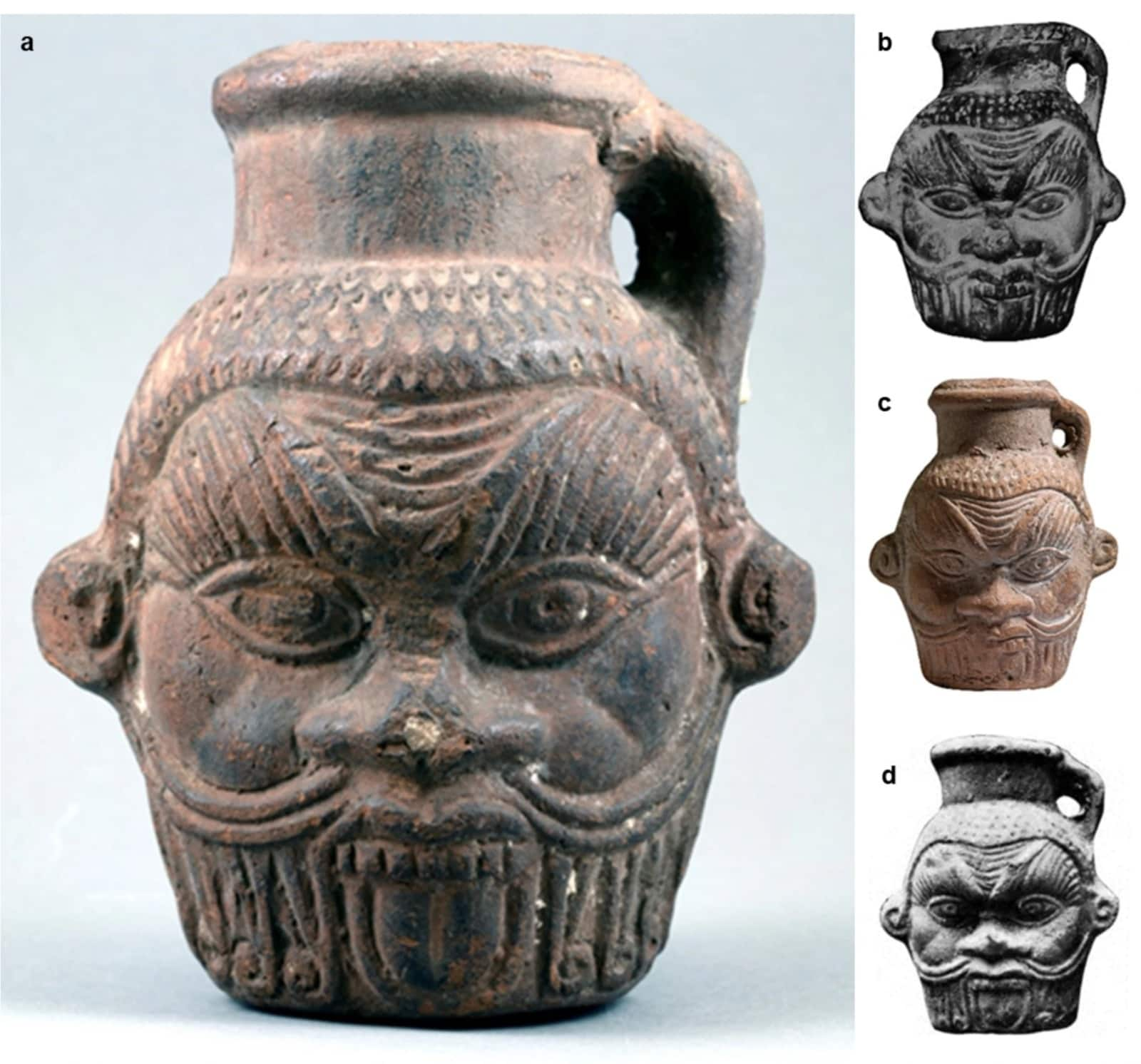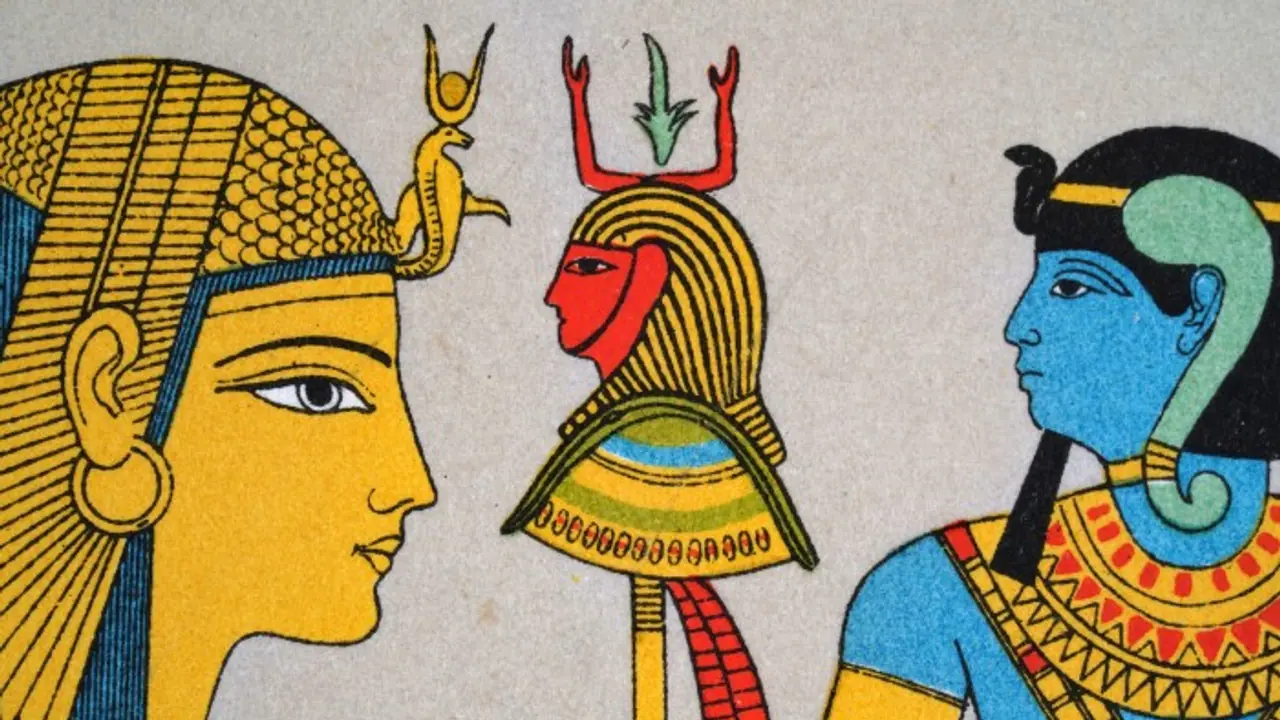A recent study has unveiled a shocking glimpse into the ritualistic practices of ancient Egypt, where a bizarre cocktail made with psychoactive plants, fermented fruit, and even bodily fluids was consumed during religious ceremonies.
(Image for representation purpose only; Credit: Getty Images)

A recent study reveals that ancient Egyptians consumed a disturbing alcoholic concoction made with psychedelic substances and bodily fluids. Researchers analyzed chemical traces inside a 2,200-year-old ceramic drinking mug from Egypt, which depicted the head of Bes, a deity believed to protect women and children, particularly during childbirth.
The traces inside the mug revealed a fermented fruit-based alcoholic liquid, along with psychoactive compounds from plants that induced "dream-like visions." For an added effect, the mixture included bodily fluids such as human blood, breast milk, and even vaginal and oral mucus. The drink was flavored with honey, sesame seeds, pine nuts, licorice, and grapes, which were used to mimic the appearance of blood.
Despite the unusual ingredients, the beverage was likely consumed in moderation, with each serving measuring about 90ml, roughly one-sixth of a pint.
Davide Tanasi, a professor at the University of South Florida (USF) and author of the study, suggests that the mixture was likely consumed by individuals who were ill and sought to experience 'prophetic dreams.'
"At this point, we are 100 per cent certain that psychotropic substances were used for "incubation rituals" connected with the cult of Bes. Incubation rituals are religious practices where people sleep in a sacred space to receive a dream from a deity that may provide healing," he was quoted as saying in a MailOnline report.
Around 2,000 years ago, Bes was revered for his role in offering protection, fertility, medicinal healing, and magical purification. The Bes vessel analyzed in this study dates back to the second century BC and is currently housed in the collection of the Tampa Museum of Art in Florida. It was reportedly discovered in the Fayum district, located south of Cairo, a region known in Ancient Egypt for its fertility and rich plant and animal life.

[(a) Drinking vessel in shape of Bes head; El-Fayūm Oasis, Egypt; Ptolemaic-Roman period (4th century BCE − 3rd century CE), (courtesy of the Tampa Museum of Art, Florida). (b) Bes mug from the Ghalioungui collection, 10.7 × 7.9 cm (Ghalioungui, G. Wagner 1974, Kaiser 2003, cat. no. 342). (c) Bes mug inv. no. 14.415 from the Allard Pierson Museum, 11.5 × 9.3 cm (Courtesy of the Allard Pierson Museum, Amsterdam; photo by Stephan van der Linden, Nature.com). (d) Bes mug from El-Fayum, dimensions unknown (Kaufmann 1913; Kaiser 2003, cat. no. 343)]
Professor Tanasi collaborated with USF researchers and partners from Italy, including the University of Trieste and the University of Milan, to conduct chemical and DNA analyses. By scraping a sample from the inner walls of the vase, the team employed various analytical techniques to uncover what substances it once contained.
Among the ingredients identified was Peganum harmala, commonly known as Syrian rue, a plant native to the Mediterranean basin. The seeds of this plant contain high levels of the alkaloids harmine and harmaline, which are known to induce 'dream-like visions.' These visions are typically 'oneirophrenic,' where individuals lose the ability to distinguish between reality and dreams.
The plant also contained lower concentrations of the alkaloid vasicine, which has 'utero-tonic' properties at specific dosages, according to the researchers. These properties can assist in childbirth or even induce abortion, tying back to the associations with Bes, the deity linked to fertility and protection during labor.
Further analysis revealed traces of the aquatic plant blue lotus flower (Nymphaea caerulea), which contains the psychoactive alkaloid aporphine. The team also found remnants of a fermented fruit-based liquid and other ingredients like honey or royal jelly. Additionally, a compound from the licorice plant (Glycyrrhiza glabra) was discovered, suggesting that licorice was cultivated in ancient Egypt.
Other traces included wheat and sesame seeds, along with yeast from fermentation such as Saccharomyces cerevisiae (still used in baking and brewing), as well as pinolenic acid, indicating the presence of pine nuts, a source rich in this fatty acid.
The most unsettling finding, according to the team, was the discovery of "a high presence of human proteins within the residue." This suggests that human fluids were deliberately added to the drink, likely for ritualistic purposes.
"This includes fluids like breast milk, mucous fluids (oral or vaginal), and blood," the study said.
One possible reason for consuming this concoction may have been to recreate the Myth of the Solar Eye, a key event in Egyptian mythology. In the tale, Bes pacified the bloodthirsty goddess Hathor by offering her an alcoholic drink laced with a plant-based drug.
"In the light of our results, it would be possible to infer that this Bes-vase was used for some sort of ritual of reenactment of what happened in a significant event in Egyptian myth," the team say in their paper, newly published in Scientific Reports.
Prior to this analysis, experts had speculated that Bes mugs were used for holding sacred water, milk, wine, or beer, making the discovery of this strange cocktail quite surprising. The team's study, however, is the first to identify all the chemical signatures of the liquid mixture found in the Bes mug at the Tampa Museum of Art.
The next step for the researchers is to conduct similar analyses on other Bes mugs, of which fewer than 15 remain, including some at the Allan Pierson Museum in Amsterdam. These mugs, produced from the same mold as the Tampa mug, could reveal whether there was a single, standardized recipe for this 'magical potion,' as Professor Tanasi explained to MailOnline.
The Bes mug from Tampa, which is on display at the Tampa Museum of Art in Florida, has been recreated as a to-scale 3D replica for the public to view.
"The 3D print can also be used for public outreach experiences with the public with visual impairments and cognitive disabilities. Additionally, we were also able to calculate the amount of liquid that the original Bes mug contained, simply filling up with water the 3D print – about 90ml," Professor Tanasi added.
